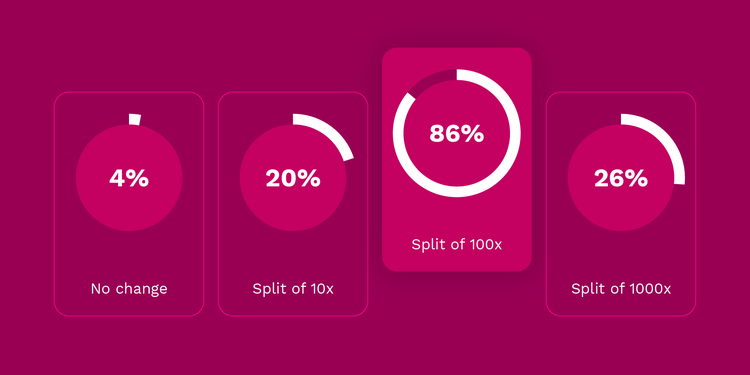The dot in Polkadot is moving, radically altering the value of its DOT tokens. The blockchain interoperability project has announced that “Denomination Day” will fall on August 21, with native DOT tokens undergoing a redonimation at block 1,248,328.
At approximately 3pm CEST the decimal point in DOT will shift two places to the right, making new DOT 100x smaller than its forebearer.
At the same time, user balances will increase by 100x, so that the value of individual holdings remain the same. Every user in the Polkadot ecosystem will continue to hold the exact same percentage of DOT relative to the overall supply.
The First Vote
The change comes thanks to the first democratic vote held on the Polkadot chain. Token holders selected from four potential options: no change, split of 10x, split of 100x, and split of 1,000x.
The two biggest stakeholders – the Web3 Foundation and Parity Technologies – abstained from the voting process. Despite this abstention, an impressive 2.86 million votes were recorded.
The 100x split was by far the most popular option among members, securing 86% or 2.47 million votes. The ‘no change’ option was the least popular, securing only 4%, representing 120,000 votes.
A variety of reasons for the change were volunteered, but according to Polkadot the argument which carried most weight with its users was that the redenomination would create "a much more ergonomic DOT value."
The finer currency value is expected by users to make DOT a far more practical means of exchange. Following Denomination Day, DOT will only be measured to the 10th decimal place rather than to the 12th with the smallest denomination dubbed the Planck.
According to one user, Denomination Day is lightly inspired by Decimal Day, in which the shilling was abolished in the UK as the country moved to the decimal standard.
Accelerating Progress
Denomination Day comes on the back of a string of positive developments for the Polkadot ecosystem. Earlier this month the project announced the launch of Rococo, a testnet designed to evaluate inter-shard communication protocols. The Rococo testnet is set to utilize three separate parachains called tick, trick, and track for Horizontal Message Passing.
The result should allow messages, and thus tokens, to pass between blockchains via a relay chain. If successful, this would be an important milestone not only for Polkadot’s sharding, but for the wider blockchain space.
In July, the company secured a further $43.7 million in funding following a three-day private token sale. That sum increases the total raised by the project to $188.7 million following their initial raise of $145 million in 2017. With that financial backing, Polkadot now looks to deliver on resolving the scalability and interoperability issues that Ethereum cannot.
With the DeFi market hotting up and Ethereum slowing to a crawl, that window of opportunity is now firmly open.



